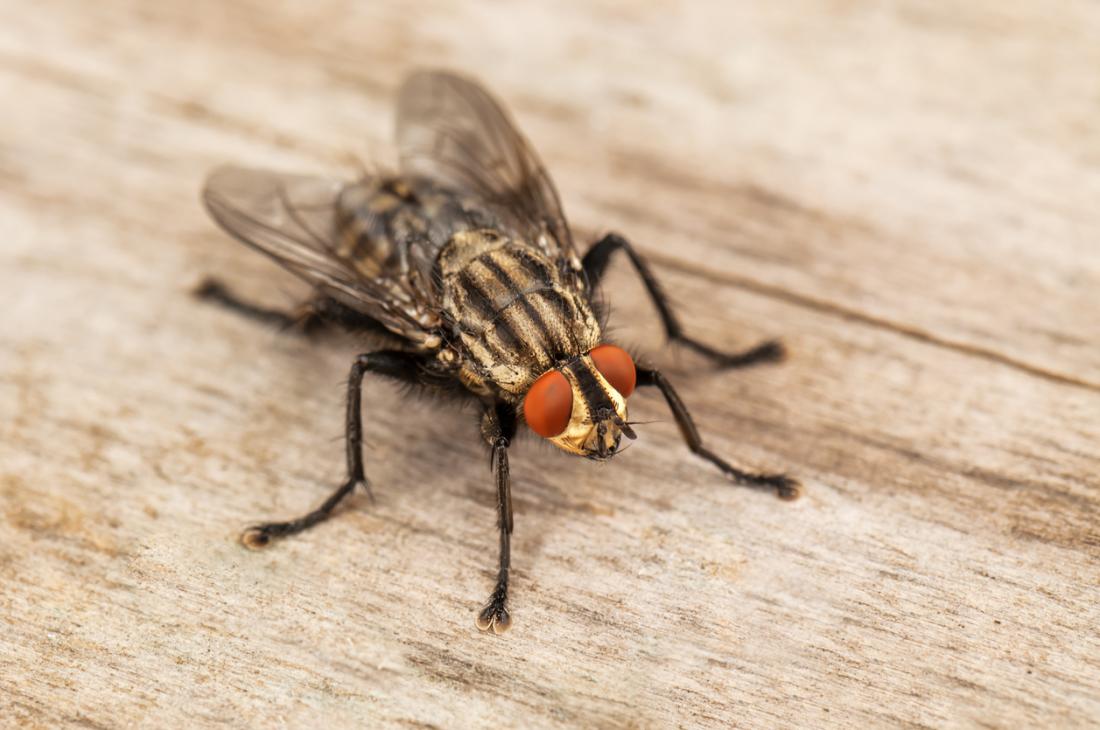House flies have been known to spread various diseases, including salmonella, E. coli, and shigella. They can also spread diseases by contaminating food and surfaces with bacteria from their feet and mouthparts. It is important to keep flies away from food and to practice good hygiene to prevent the spread of disease.
There are several ways to get rid of house flies:
- Keep surfaces clean: Clean and sanitize surfaces, especially in the kitchen, to reduce the amount of food and other organic matter that can attract flies.
- Use fly traps: There are various types of fly traps available, including sticky fly paper, electric fly zappers, and fly traps that use bait to attract flies.
- Use natural repellents: Certain plants, such as basil, bay leaves, and mint, give off strong scents that repel flies.
- Seal entry points: Check for cracks and crevices around windows and doors, and seal any gaps to prevent flies from entering the house.
- Use insecticides: Use an insecticide spray or fogger to kill flies, but be careful of safe usage according to the instructions on the label, and avoid using it around children or pets.
- Use Fly Screens: Installing screens on windows and doors will prevent flies from entering the house.
House flies are known to spread a variety of diseases, including:
- Salmonella: a bacterial infection that can cause food poisoning, with symptoms such as stomach cramps, diarrhoea, and fever.
- coli: a type of bacteria that can cause diarrhoea, urinary tract infections, and other illnesses.
- Shigella: a bacterial infection that can cause diarrhoea, stomach cramps, and fever.
- Cholera: a serious bacterial infection that causes severe diarrhoea and dehydration.
- Dysentery: an infection of the intestines that can cause diarrhoea with blood and mucus, abdominal pain, and fever.
- Typhoid fever: a serious bacterial infection that causes fever, weakness, stomach pain, headache, and loss of appetite.
House flies can transmit diseases by contaminating food and surfaces with bacteria and other pathogens. Some ways in which a person may catch a house fly-transmitted disease include:

- Eating or drinking contaminated food or liquids: House flies can transfer bacteria and other pathogens from their feet and mouthparts to food and drinks.
- Touching contaminated surfaces: If a house fly lands on a surface, it can transfer bacteria and other pathogens to that surface. A person may then touch the surface and transfer the pathogens to their mouth, eyes, or nose, leading to infection.
- Breathing in contaminated air: House flies can also spread diseases by contaminating the air with bacteria and other pathogens. A person may inhale these pathogens and become infected.
Professional pest control for house flies typically involves a combination of methods to effectively eliminate and prevent future infestations. Some common methods used by pest control professionals include:
- Inspection: The pest control technician will inspect the property to identify potential sources of the infestation, such as food sources, entry points, and breeding sites.
- Sanitation and exclusion: The technician will clean and sanitize the affected area and suggest or perform measures to exclude the flies from entering the property again.
- Treatment: The technician may use a variety of methods to treat the infestation, including the use of insecticides, baits, and traps. These methods may be targeted at adult flies or their breeding sites.
- Monitoring: The technician will establish a monitoring program to ensure that the infestation is under control, and to detect and treat any new infestations.

Comments